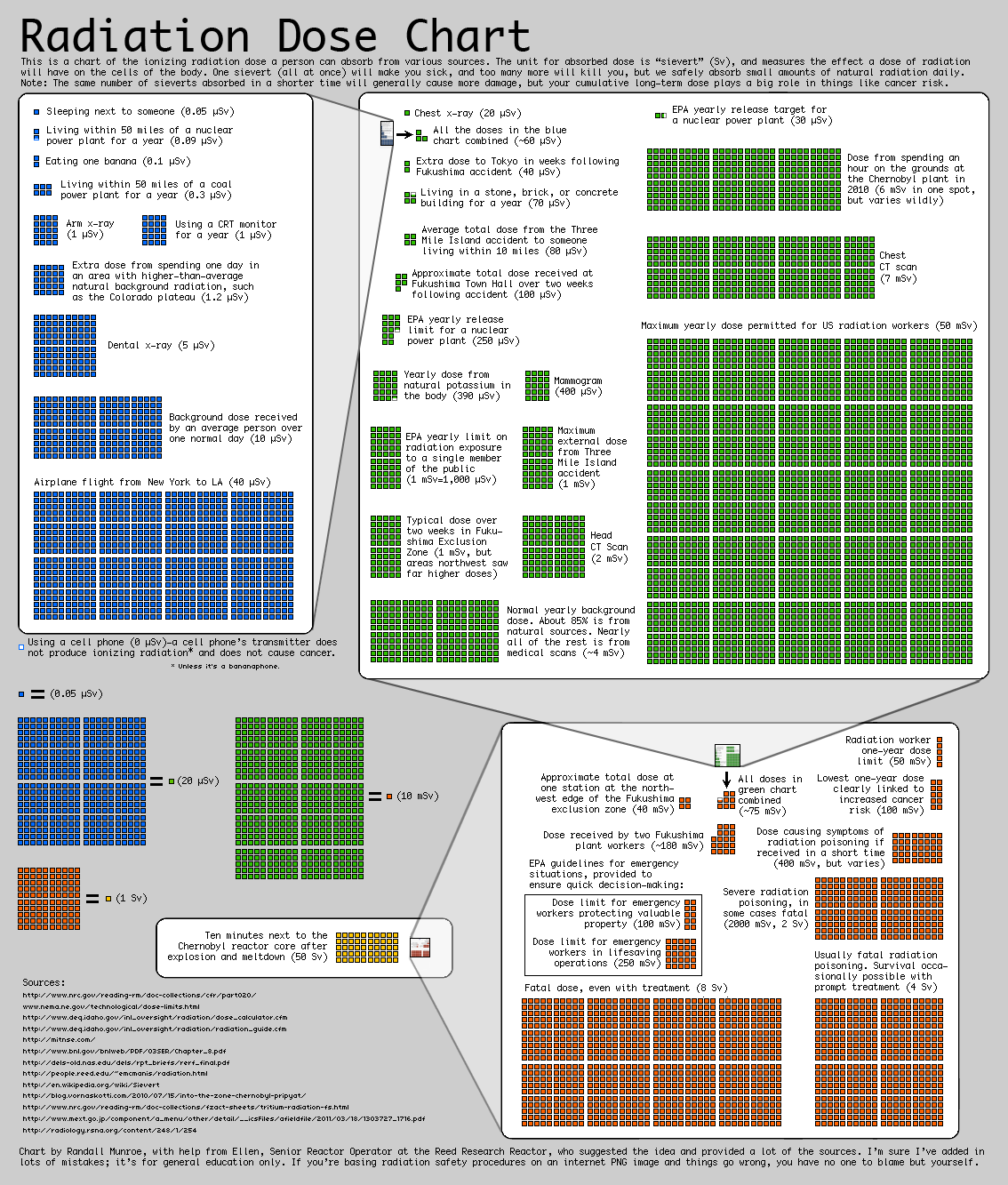7 – Major accident
Chernobyl Disaster
- We all know (at least I hope) of the Chernobyl catastrophe, 6000 dead within 4 years from the radiation, 31 dead from the initial blast, world wide radiation spread.
The worst contaminated areas getting a reading of above 200,000 roentgens per hour.
Now what is a roentgen you may ask? well even if I explain it, it wont mean as much as saying that at 500 roentgens over a 5 hour period (100 roentgens per hour) , you will die of radiation sickness within that time , the "normal dose" for a human to receive over a year from things like cell phones, cosmic rays and background radiation is about 0.023 roentgens per hour.
200,000 roentgens per hour is still being recorded in parts of Chernobyl, with a half life of 10 years and in some cases 25 years (strontium 90), often taking between 10 and 20 half lives to break down to "safe" levels, chernobyl may be inhabitable for 500-5000 years, Yeah that's not a type FIVE THOUSAND years for strontium 90..
That is the breadth of a level 7 catastrophe.
Fukushima Nuclear Meltdown.
The incident that's all over the news lately, but what does it mean?
Well it has been declared a level 7 incident.
This is an incident that has caused wide spread long term damage, that needs an extreme long term plan of action.
Fukushima now has a 20 km exclusion zone and a 30km volunteer evacuation zone outside that.
The widespread effects you may not have heard of yet however, Iodine-131 has been found in cows all across the United States of America, the cows are suspected to have eaten tainted grass, and although this amount is neither a health concern nor deadly, it is still present.
The more pressing concern was the discovery Cesium 134 and 137 as far away from japan as "Beijing, Tianjin, Hebei, Shanxi, Shandong, Shanghai, Inner Mongolia, Jiangshu, Zhejiang, Anhui, Jiangxi, Hubei and Ningxia in China, and in California, USA" -wikipedia
The reason this is concerning is that the half life of cesium is 30 years, with a ten year safe breakdown.
So it will infect target cells, and be a part of the food chain in these areas for another 300 years.
This can be a good and bad thing as it will cause mutations, some of those mutations may be a good evolutionary step, however most will just make it poisonous for human consumption.
6 – Serious accident
Kyshtym Disaster
The Kyshtym Disaster happened in 1957, and I am not all that familiar with it, so any information i can present too you would be purely off of the wikipedia page.
From what I can gather however is that a cooling tower exploded, and dumped 80 tonnes of radioactive material into the atmosphere..
(that's bad)
5 – Accident with wider consequences
The factors required for a level 5 are.
Impact on people and environment
This includes:
Limited release of radioactive material likely to require implementation of some planned countermeasures.
Several deaths from radiation.
and
Impact on radiological barriers and control
Which includes:
Severe damage to reactor core.
Release of large quantities of radioactive material within an installation with a high probability of significant public exposure. This could arise from a major accident or fire.
The most common level 5 accident referenced is
3 Mile Island was a nuclear power plant in America that due to some design flaws and operator errors started to lose cooling fluid, leading to a melt down in one of its reactors.
Luckily due to good training and past experience death was kept to a minimum and nobody was seen as highly infected.. However the cultural affect (General media and such) was extremely widespread.
4 – Accident with local consequences
The factors required for a level 4 are split into two categories
Impact on people and environment
Minor release of radioactive material unlikely to result in implementation of planned countermeasures other than local food controls.
At least one death from radiation.
Impact on radiological barriers and control
Fuel melt or damage to fuel resulting in more than 0.1% release of core inventory.
Release of significant quantities of radioactive material within an installation with a high probability of significant public exposure.
An example includes a minor incident in Argentina, where a rod failed to insert correctly killing the operator and injuring two others.
3 – Serious incident
Serious incidents include things like stolen nuclear material and things like radiation burns to at least one person
2 – Incident
an incident is something like, a worker receives slightly more than the annual acceptable radiation limit.
1 – Anomaly
There is no real safety significance with an anomaly.
0 – Deviation (no safety significance)































